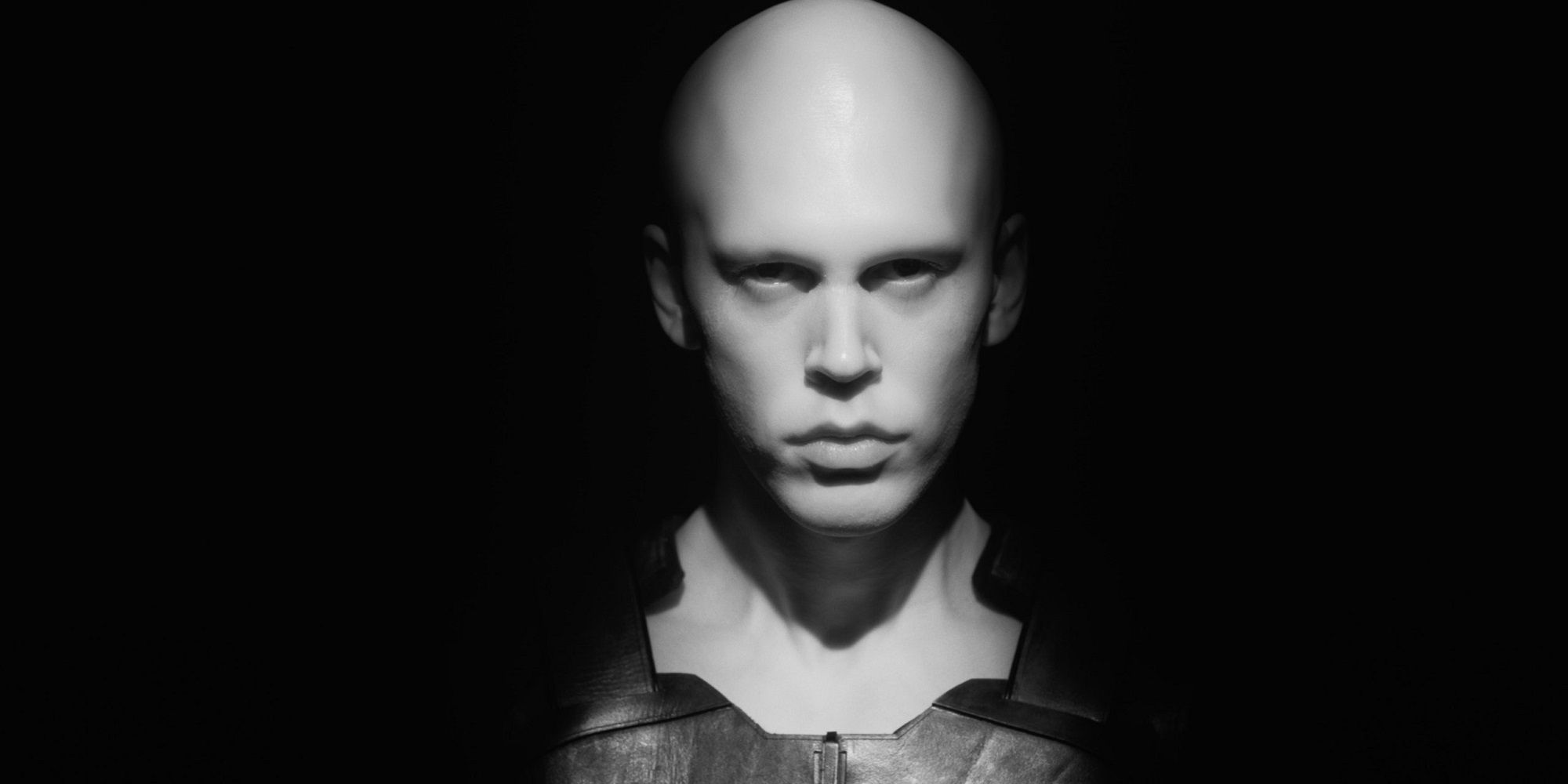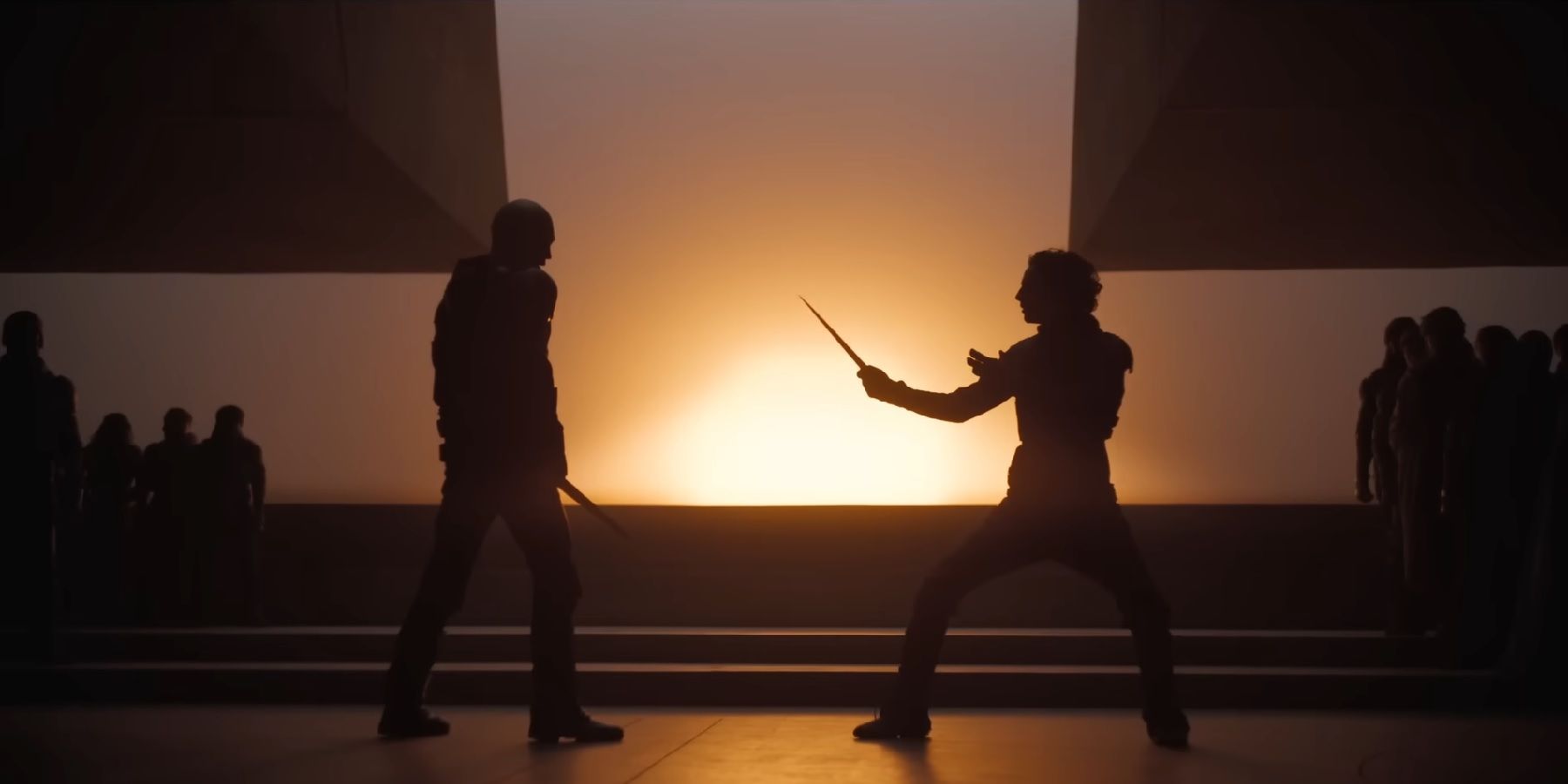
Dune: Part II spends a lot of screen time building up Feyd-Rautha Harkonnen as Paul Atreides’ greatest rival. The Reverend Mother called Feyd-Rautha a candidate, securing his bloodline and testing him with a Gom Jabber. The future of House Harkonnen was regarded as an equal opponent to Paul. However, the character himself lacks explanation, especially after he perishes during his duel with Paul, leaving viewers confused about Feyd-Rautha’s motivations and his relationship with Paul.
Feyd-Rautha is a new character in Dune: Part II. Though portrayed as a big bad, the character is truly the most tragic of all. Just as his quick entrance and exit from the film suggests, Feyd-Rautha is merely a chess piece in the political game of Dune. Unlike Paul, Feyd-Rautha driven more by an abstract purpose than his own personal motivations. Though similarly produced by the Bene Gesserit breeding system, Feyd-Rautha eventually became a tool in the Bene Gesserit’s power game — the Bene Gesserit used him to breed the possible future Kwisatz Haderach and suppress Paul Atreides’ rise in power, but not before plotting to have him marry Lady Jessica and Leto Atreides, which failed through when Paul was born.
What Happens to Feyd-Rautha in Dune: Part II?

In terms of the Bene Gesserit’s genes, Feyd-Rautha was at the same stage in the breeding system as Paul, since they were supposed to be married (if Paul was a girl). Feyd-Rautha is just as dangerous as Paul. They are a close match for each other in many ways. However, Paul’s fate is significantly altered when Lady Jessica chooses to give birth to a male instead of a female. Paul embarks on a much different journey than Feyd-Rautha. Unlike Paul, who has received training in the Way and is hailed as the Lisan al Gaib by the Fremen due to the political conflicts between Houses, Reyd-Rautha has a relatively stable life. He’s arrogant and cunning. He is cheered on when he wins a fight, while Paul goes through an internal struggle to embrace his position as the new Duke.
The duel between the two is the only time viewers get to see Feyd-Rautha and Paul Atreides being pitted against each other. Strictly speaking about combat, Reyd-Rautha is a powerful opponent. Paul nearly lost the fight. He had to take a hit to win it, barely able to walk away with his life, but that’s only on a fighting level. There are so many more viewers don’t get to see about Reyd-Rautha — his leadership ability, military talent, instinct etc.
With Feyd-Rautha and Baron Vladimir Harkonnen dead, Lady Jessica was technically the next in line as the heir of House Harkonnen. She declined the position, so the House Harkonnen throne then passed to Paul. As the last living heir, he took over House Harkonnen’s resources in his ascendence to power. Interestingly, after the events in Dune, there’s no real difference between House Atreides and House Harkonnen, since House Atreides consisted mainly of Baron Vladimir’s offspring, and vise versa.
What Does Bene Gesserit Want With Feyd-Rautha?

The Bene Gesserit’s plan for Feyd-Rautha changed when Paul rose to power on Arrakis. The Reverend Mother has been trying to determine if Paul was Kwisatz Haderach, first with the Gom Jabber, then by using Feyd-Rautha. Sadly, the future of House Harkonnen served as a test for Paul. The Bene Gesserit couldn’t determine if Paul was Kwisatz Haderach. He has displayed superior powers and resiliences. However, he also wasn’t supposed to be Kwisatz Haderach. If Paul survived the duel with Feyd-Rautha, the Bene Gesserit would be more inclined to believe that he could be the Chosen One, though they’d still be doubtful. As a secret organization that tried to plan to guarantee a prophecy (which is more magical in nature than scientific), they’re just having a hard time admitting Paul could be the One, and Feyd-Rautha, unfortunately, became the test subject that was sacrificed in the process.
Does Feyd-Rautha Have Dreams Like Paul?

Unlike Paul, whose mother has taught him the Way, Feyd-Rautha didn’t receive any Bene Gesserit training. It’s simply because the Bene Gesserit isn’t planning on grooming him as the Kwisatz Haderach. Their plan for him is strictly for breeding purposes only. As Paul Atreides rises in power, being the One in the prophecy, the Reverend Mother sends Feyd-Rautha to test him out, which results in the duel scene near the end of the film. In fear that Feyd-Rautha might lose the fight, the Bene Gesserit sent Lady Margot to secure his bloodline, making sure that he’d be of use as a stepping stone in the breeding system to control the future possible Kwisatz Haderach.
Is Feyd-Rautha a Possible Kwisatz Haderach?

Another interpretation of the “candidate” sees Feyd-Rautha being a possible new replacement for the Emperor. Knowing that Emperor Shaddam Corrino IV’s power was ceasing among the Great Houses, the Bene Gesserit wanted to secure their control over the next one. With Feyd-Rautha being a powerful opponent to Paul Atreides, they wanted to guarantee that he’d be on their side before supporting Feyd-Rautha’s ascendence to power. The final duel scene could also be interpreted as the two possible candidates fighting for the throne. Paul walked away with glory, while Feyd-Rautha died in defeat, just another failed experiment, soon to be forgotten. Instead of the arrogant, cunning villain Feyd-Rautha posed to be, his story is a tragic one in Dune: Part II.





